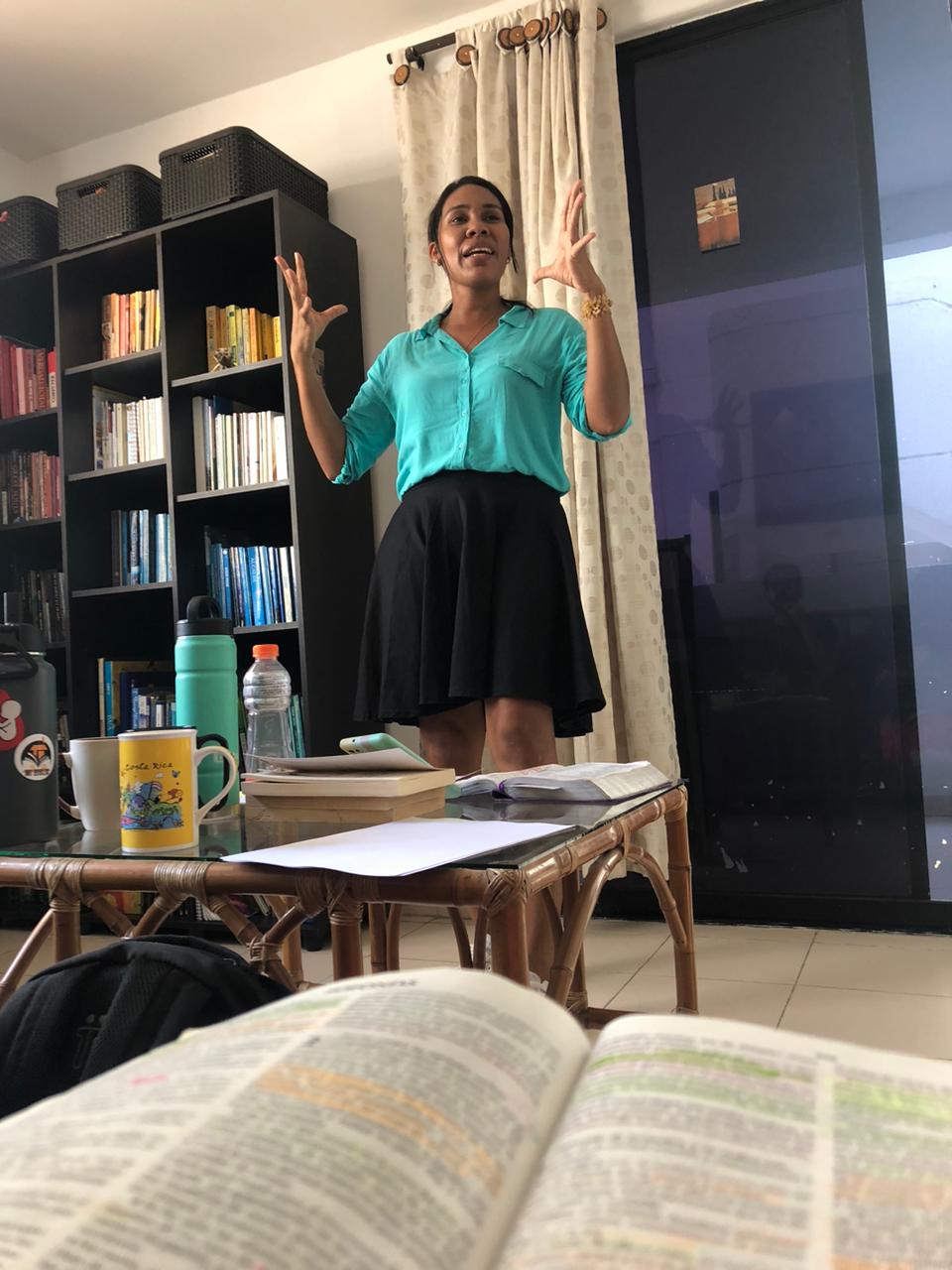How to Teach:

Deep Bible Content:
THE BIG IDEAS
Jesus, the Messiah, the Servant, and the New Israel
Behind the four gospels, there is a single and ultimate question: Who is Jesus? The evangelists address this question in several ways, but the most important concept is of a suffering Messiah, embracing both the messianic ideals preached by the prophets and the suffering of God’s Servant announced by Isaiah. Jesus would be what ancient Israel was not. Ancient Israel had failed terribly, but Jesus would be the new “Son” and the new “Servant.” He would relive the ancient story of Israel, including the exodus, the exile, and vindication.
Jesus’ Ministry of Signs
While all the gospels depict Jesus as performing miracles, John consistently uses the word “signs” to refer to Jesus’ miracles. As such, the miracles of Jesus were not merely “wow” events, but they pointed beyond themselves to his true identity. Especially, a belief in miracles was insufficient to create genuine faith; true faith must go beyond the signs to Jesus himself.
The Relationship of Healing to the Purity Laws
Many of Jesus’ miracles were performed against the background of ritual impurity from the Levitical laws. Normally, uncleanness passed to another person by secondary contact, but Jesus regularly crossed these boundaries so that in his healings, his purity transferred to the sufferer, while their uncleanness did not pass to him.
The Centrality of the Cross and Resurrection of Jesus
The gospels are not modern biographies. Rather, they describe the ministry of Jesus, the Messiah, which climaxed in his death in Jerusalem and his resurrection. It is no accident that by far the most detail in the gospels is concerning this event and what surrounded it, for this was the very center of the Christian gospel.
The Logos Theology of John
John’s Christology centers on Christ’s deity as the pre-existent Logos, the unique Son of the Father. Especially in the Ego Eimi sayings, Jesus directly identified himself with Yahweh, the great “I AM” of Ex. 3:14.
Crossing Ethnic Barriers in Acts
Luke’s second work, the Book of Acts, is a focused history on how the Christian message broke through various levels of ethnicity including the Hellenistic Jews, the Samaritans, the God-fearers, and the pagans. The final word in the in the Greek text of the Book of Acts is “unhindered,” Luke’s way of saying that the gospel was now for the nations of the world.
The Gospel of St. Paul
On various occasions, Paul can refer to the Christian message as “my gospel.” Paul’s contribution to the Christian message focuses on the death and resurrection of Jesus, but especially, it concerned the extension of this message to non-Jews.
Jesus, the Final Yom Kippur
The burden of this unique NT book revolves around the sacrificial system of ancient Israel, especially the Day of Atonement (Yom Kippur), when sacrifice was offered for the entire Israelite nation. The argument of Hebrews is that Jesus is the final Yom Kippur who as both priest and sacrifice offered himself απαξ (= once and for all), not merely for Israel, but for the world.
The Consummation of the Kingdom of God
The idea of a second coming of the Messiah was utterly new to the disciples of Jesus. However, the messianic promises of the prophets that began to be fulfilled in the life, death and resurrection of Jesus would not be completely fulfilled until his coming at the end of the age. This eschatology puts the interim into “already” and “not yet” categories, and Christians live between these two ages, the present age and the age to come, at once participating in both.
KEY CHARACTERS
Jesus
Without question, Jesus is the central figure in the New Testament. The exalted titles given to him, Savior, Lord, Logos, Messiah, Servant, Son of God, and Son of David, all point toward him as the one pre-existent with the Father, incarnate in his earthly birth, identified with all humans in his suffering and death, triumphant over death in his resurrection, exalted to the right hand of God as Lord of heaven and earth, and Savior of the world.
Paul
The author of about a quarter of the New Testament, Paul looms as the single most influential figure in early Christianity apart from Christ himself. As a rabbinical student under Gamaliel, he had a vision of the risen Christ which changed him from a persecutor of Christians to their foremost advocate and missionary.
Luke
Also writing just over a quarter of the New Testament, Luke is a non-Jew whose testimony about Jesus and the early church was drawn from research and personal experience. His importance is that he narrates how early Christianity began.
John
Generally credited with the Fourth Gospel, three letters, and the Apocalypse, John offers a unique perspective of Jesus as well as the early church near the end of the 1st century. His language is simple, but his concepts are huge.
Peter
The big fisherman, whom Jesus nicknamed the “Rock,” was the most important leader in the earliest days of the church. He is the dominate leader in the first half of the Book of Acts, and he also wrote two letters
James
This brother of Jesus became the leader of the Jerusalem church, the center of early Christianity. His letter is the most Jewish of the letters in the New Testament
TYPES OF LITERATURE
Gospel
With the deaths of the apostles, early Christians began to compose gospels, first Mark, then Matthew and Luke, and finally John. These four portraits of Jesus became the written record of what previously was oral tradition handed down by those who had known Jesus personally. All four were composed within the living memory of Jesus’ disciples. Within the gospels are sub-categories of literature, such as, parables and apocalyptic.
Narrative History
The Book of Acts is the narrative history of the earliest Christians. Luke follows Greco-Roman conventions in composing this work, paying attention to historical context and special vocabulary.
Epistle
Letters written to churches and individuals comprise the second large block of material in the New Testament. They follow the conventions of letter-writing in the 1st century Greco-Roman world, set down by an amanuensis, delivered by special couriers, and publicly read to the churches to whom they were addressed.
Apocalypse
While in the Intertestamental Period the Jews wrote many texts in the apocalyptic style, only one such work is included in the New Testament canon. Reading this work demands that one know the style of Jewish apocalyptic. Reading it without this knowledge generally leads to significant misinterpretation.
CONTROVERSIAL ISSUES
The Synoptic Problem
While it is generally acknowledged that Mark is the earliest Gospel, the use of Mark and a theoretical sayings source called “Q” has dominated the study of Matthew, Mark, and Luke.
Interpreting the Olivet Discourse
Three gospels, Matthew, Mark, and Luke, describe Jesus’ discourse about the 2nd Temple. Since his comments range from what would happen in AD 70 to the end of the age, interpreters have struggled to find the seams in this discourse dividing what was near and what was far.
The Identity of the Beloved Disciple
In the Fourth Gospel, the name of the author is never given. Rather, he is called “the disciple whom Jesus loved.” Who was he? The earliest post-apostolic sources say “John,” but which John, since there was more than one.
Calendar of Holy Week, Synoptics vs. John
The synoptic gospels follow a different calendar for the last week of Jesus in Jerusalem than the Fourth Gospel. In the synoptics, Jesus celebrates the last supper on the evening of Passover, while in John the last supper is the day before Passover.
The New Pauline Theology
Beginning the late 20th century, a new way of interpreting Paul has come to the forefront, emphasizing the Jewishness of Paul but also reinterpreting his ideas of justification.
The Contested Authorship of Ephesians, Colossians, 2 Thessalonians, and the Pastoral Letters
In is now well-known that in the universities it is common to credit Paul with the authorship of only seven letters that bear his name. The other six are often attributed to later writers, especially the pastoral letters.
Author of Hebrews
The author does not give us his name, and several candidates have been suggested over the years.
Use of the Pseudepigrapha in 2 Peter and Jude
Both 2 Peter and Jude quote from 1 Enoch and the Assumption of Moses, texts that were never canonical for the Jews or in any branch of Christianity.
Interpretive Models of the Book of Revelation
While there have been multiple interpretations of this book throughout Christian history, five models dominate the field, historicism, ahistoric symbolism, preterism, dispensationalism, and historic premillennialism.
The New Testament Canon, the Gnostic Gospels, and Contemporary Translations
The New Testament canon was fixed gradually and not finalized until the late 4th century. Some modern scholars wish to reevaluate the canon, eliminating some texts but adding others, especially the Gnostic Gospel of Thomas. Further, there are several contemporary English translations that bear examination because of the attempt to bend the translations toward certain pre-conceived concepts.





You must be logged in to post a comment.